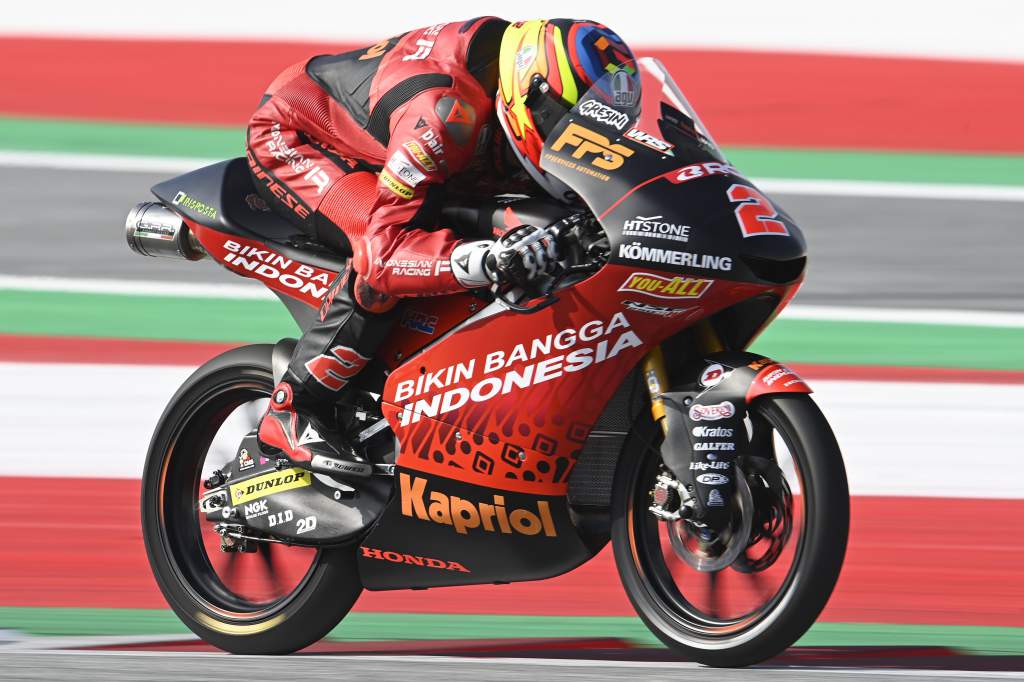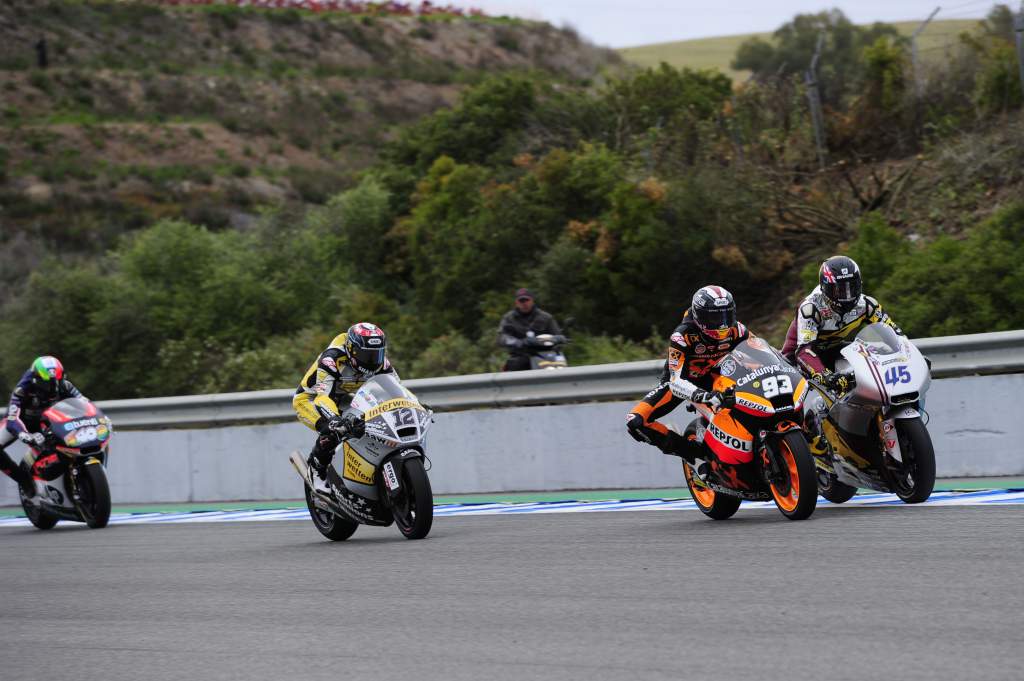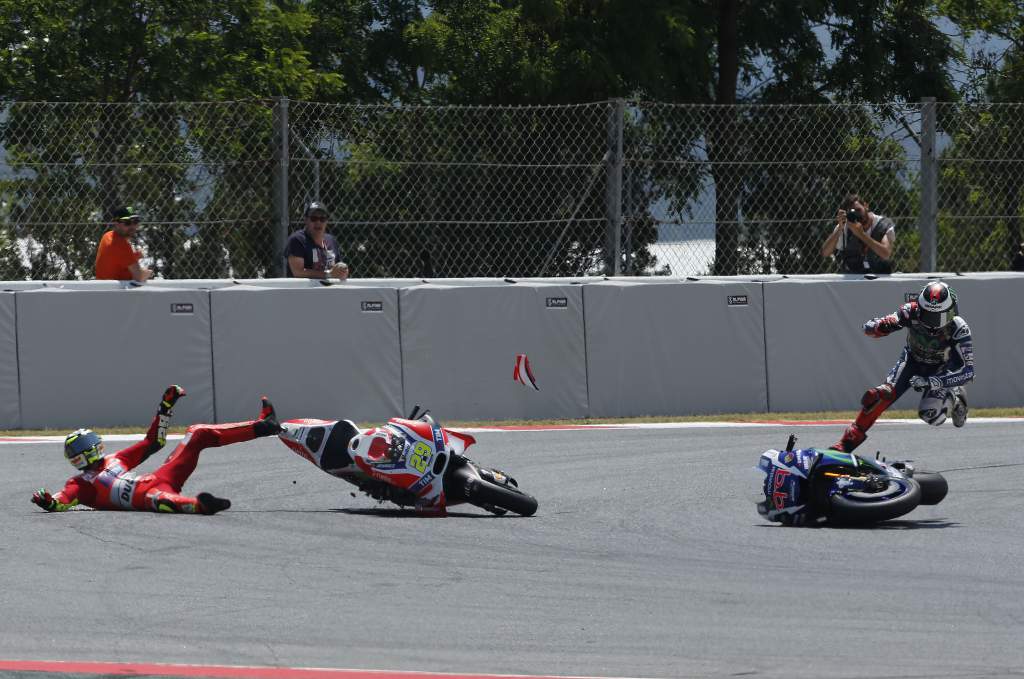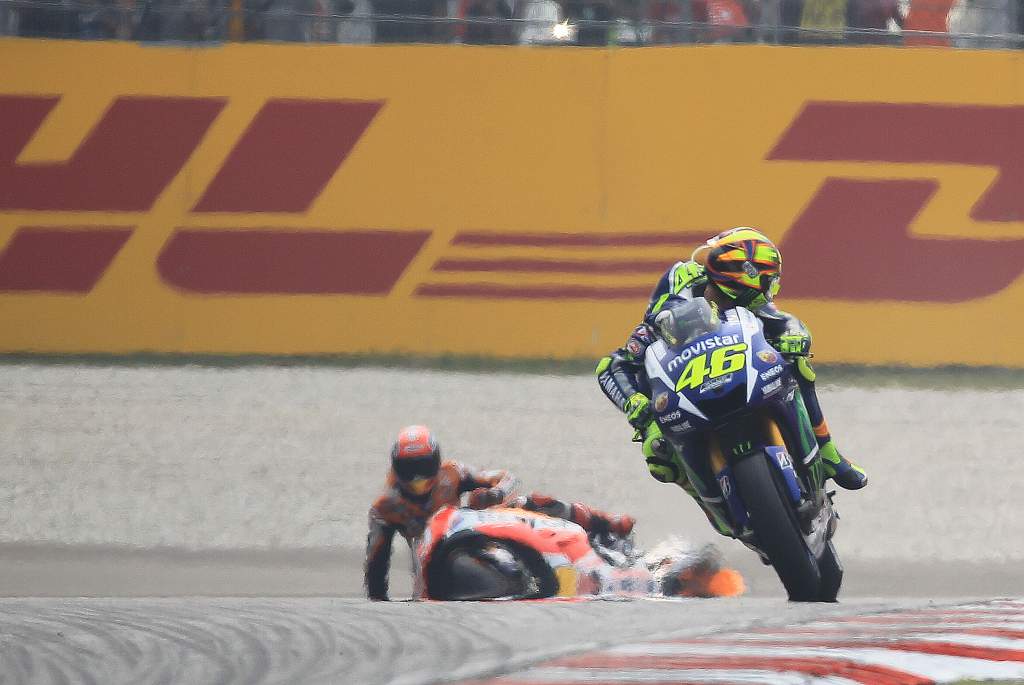Another MotoGP weekend, another series of storylines around the actions of the FIM stewards. It almost feels like an opening that I should have saved as a keyboard shortcut by this point, such has been their impact on headlines in the past year or so, and yet it’s a conversation that we keep having as the inconsistencies in their decision-making continue.
This weekend, it was once again all eyes on Moto3, as a series of riders managed to wipe out their rivals during practices and races yet to escape with only minor penalties for their actions.
Not the kind of incident you expect on the first timed laps! 😲@gabrirodrigo2 and @yamanaka_ryusei make contact! 💥#Moto3 | #AustrianGP 🇦🇹 pic.twitter.com/mq6jGNDpO5
— MotoGP™🏁 (@MotoGP) August 14, 2021
Most prolific was Gresini Racing’s Gabriel Rodrigo, who managed to chalk up a yellow card, a long-lap penalty and a pitlane start for three separate incidents where he took other riders off the track or out altogether.

The series of incidents marks the fourth and fifth times in the past year that Rodrigo has been penalised. It means that he joins other repeat offenders like his team-mate Jeremy Alcoba (five penalties including a pitlane start) and Darryn Binder (six penalties in the past year) in chalking up an impressive number of sanctions over the course of a short period of time.
We hear on a regular basis how the stewards are going to be “more strict than before”, or how this rule change or that will be the one that finally fixes all the issues – yet here we are again, with repeat offenders escaping relatively unscathed. The system isn’t working, and it needs fixing.
Not that long ago, we had a system that would have addressed this issue, too. Prior to 2016, MotoGP used a points-based penalty warning system that was effective, because it took into account cumulative incidents and meant that riders faced repercussions not only for their individual actions, but for patterns of behaviour.
The system was introduced in 2012, in part in an attempt to calm down a certain rider who was at the time fast but very wild: one Mr Marc Marquez.

An agent of chaos on a regular basis as he cut his way through 125cc and Moto2 grids, he wound up stoking the demand for action – and the new system was introduced so that he could feel the impact of repeated offences.
It was quite straightforward. Commit an offence, and receive a number of points based on the severity of the crime. Rack up four in a calendar year, and you start from the back of the grid next time out. Seven points and it was a pitlane start, while 10 was a race ban.
The most frequent user of the system in the early days wasn’t Marquez though, but Andrea Iannone, with the then-Ducati rider penalised multiple times in 2016 in particular – receiving points for wiping out team-mate Andrea Dovizioso in Argentina, before a collision with Jorge Lorenzo in Barcelona saw Iannone start the Dutch TT from the back of the grid.

If I were a cynic, though, I would suggest that the reason we don’t still have a penalty point system might be because of the most prolific victim of it.
At Misano in 2015, Valentino Rossi was handed a one-point sanction for cruising on the racing line during qualifying: a fair penalty.
Unfortunately, when he was awarded three more points for the high-profile clash with Marquez at Sepang a few weeks later, it meant he started the last race of the year from last place, derailing his championship bid and kicking off a storm of controversy that continues to this day.

However, the official reason for scrapping the penalty point system was the introduction of the FIM MotoGP Stewards Panel in 2017. The new body, headed by ex-champion Freddie Spencer, was supposed to supersede it through having a wider range of penalties and a dedicated body for sanctions and punishments.
In reality, though, what we’ve seen over and over again since is that there is seemingly no effort to consider a rider’s previous actions when handing out a fresh penalty. I mean, otherwise how on earth could Rodrigo knock off one rider while being awarded a penalty for knocking off another, then get away with a lighter penalty the second time around (long-lap penalty versus pitlane start)?
A bad day gets worse for @gabrirodrigo2! 😲
Moments after receiving a pit lane start, the @GresiniRacing rider tangles with @TatsukiSuzuki24! Both riders are ok 💢#Moto3 | #AustrianGP 🇦🇹 pic.twitter.com/F6TezRoaFs
— MotoGP™🏁 (@MotoGP) August 14, 2021
Yet arguably the old system did work. It largely ended Iannone’s stupidity. It calmed Marquez right down when he faced repeated sanctions. I don’t for a minute believe that the current crop of Moto3 riders are any more reckless than the generations before them, but as the old saying goes, while the cat’s away the mice will play. Let them think they can get away with it, and they’ll keep doing it.
So in a time when safety is more important than ever, let’s go back to the future and fix the problem with a system that we know works.




